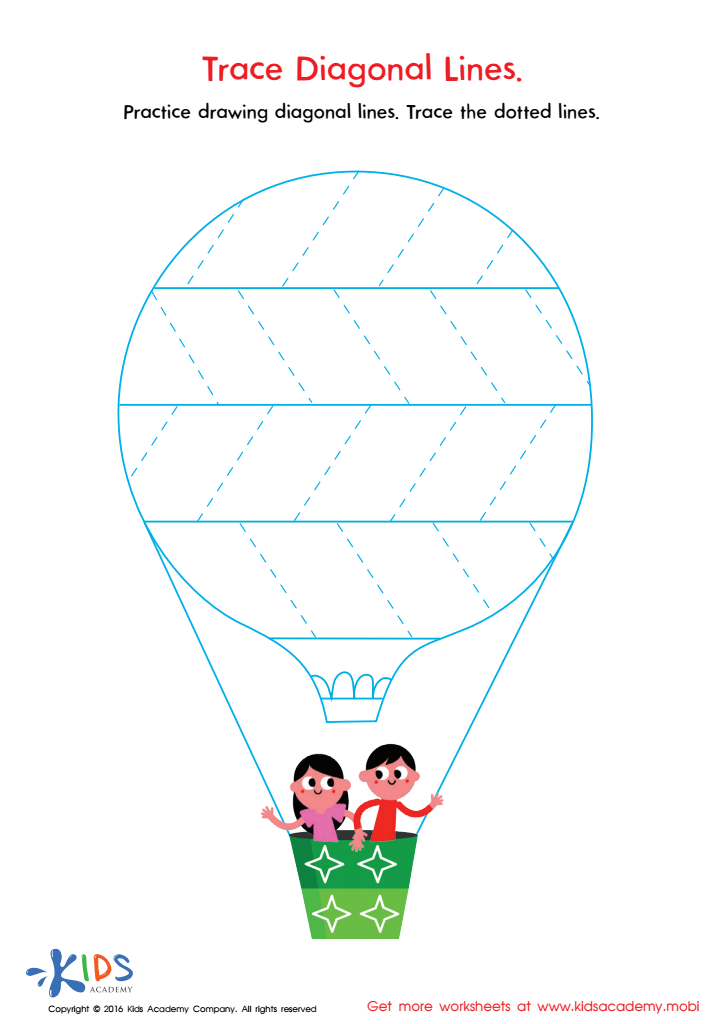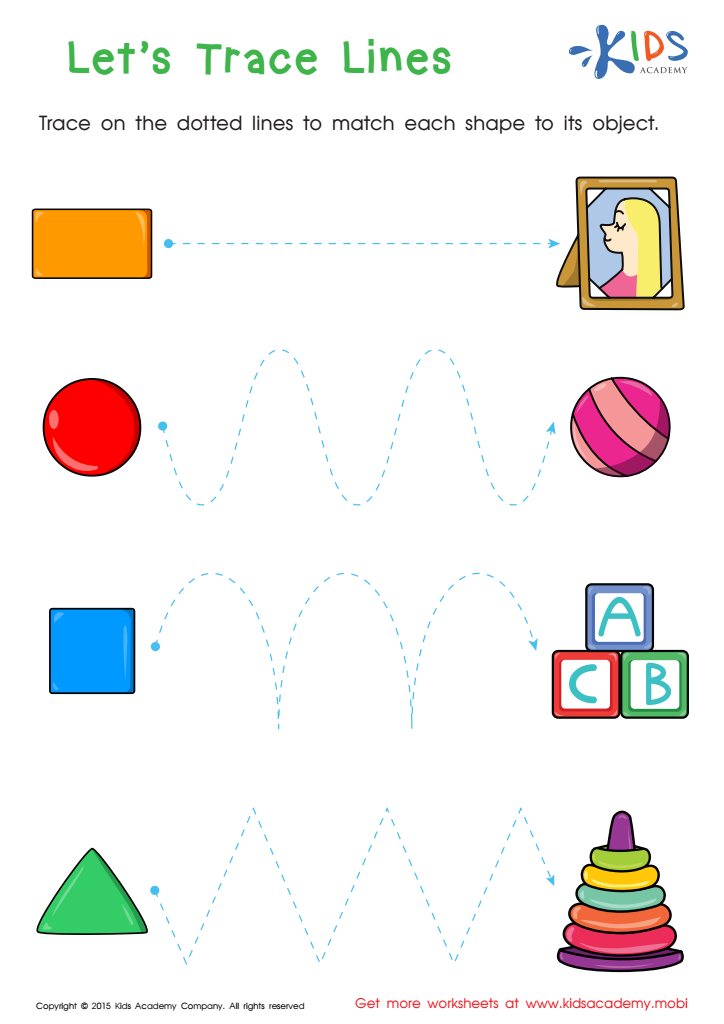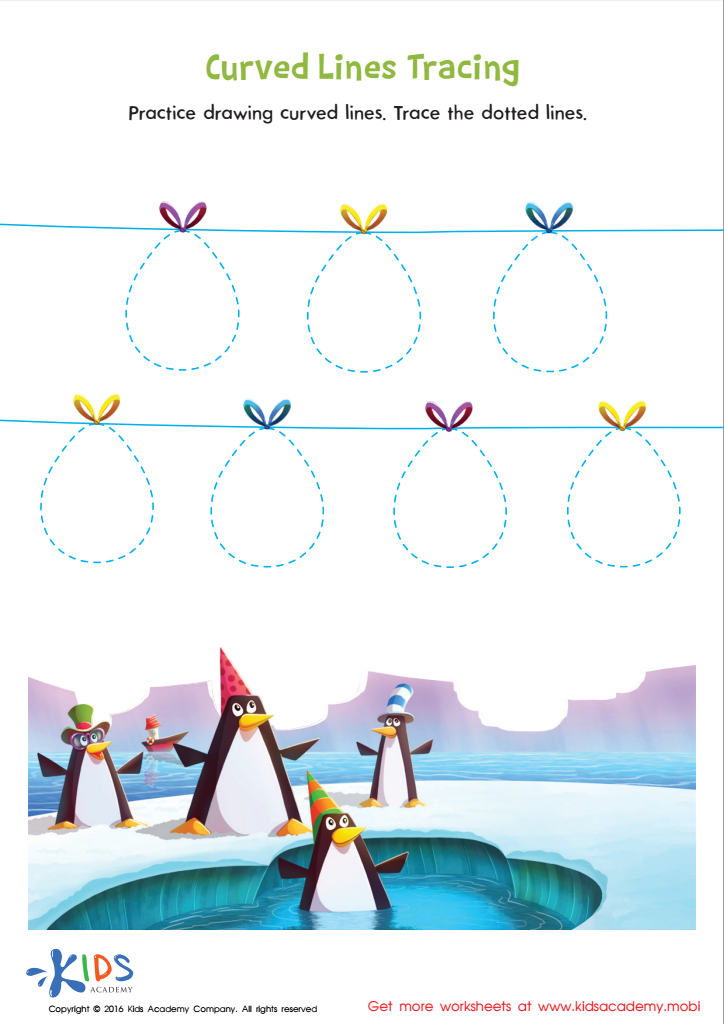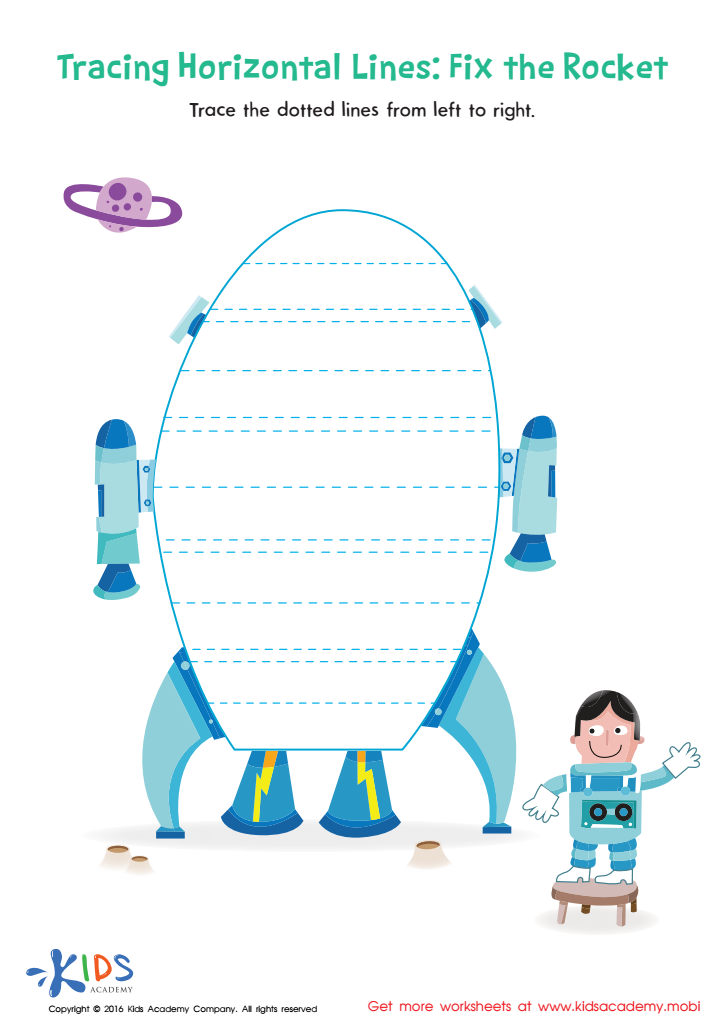Hand-eye Coordination Normal Tracing Lines and Curves Worksheets for Ages 3-7
4 filtered results
-
From - To
Enhance your child’s hand-eye coordination with our engaging tracing lines and curves worksheets designed specifically for ages 3-7. These worksheets offer a fun and interactive way for young learners to develop essential fine motor skills as they trace various lines and curves. Perfect for preschool and kindergarten classrooms, our resources not only improve handwriting readiness but also promote focus and concentration. Each worksheet features vibrant visuals that captivate children's attention while supporting their early developmental milestones. Discover how our normal tracing worksheets can lay a strong foundation for your child's writing journey, ensuring they gain confidence and proficiency in their motor skills.


Trace Diagonal Lines Worksheet


First Words: Let's Trace Lines Worksheet


Curved Lines Tracing Worksheet


Tracing Horizontal Lines Worksheet
Hand-eye coordination is a crucial skill that develops in early childhood and significantly affects a child's overall learning and motor function. For children between the ages of 3 to 7, activities involving normal tracing of lines and curves play a vital role in honing this skill. These experiences help young learners integrate visual input with their motor outputs, enabling them to refine their control and precision.
Parents and teachers should be invested in fostering this aspect of development because strong hand-eye coordination lays the foundation for various academic and life skills. It supports their ability to write, draw, manipulate objects, and engage in sports, all of which are integral for their physical and cognitive growth.
Furthermore, engaging in tracing activities helps cultivate focus, discipline, and fine motor skills. Through practice, children develop the confidence to explore more complex tasks, enhancing their problem-solving abilities. By recognizing the importance of hand-eye coordination and incorporating tracing activities into daily routines, caregivers can promote a well-rounded development that prepares children for future challenges both in school and beyond. Thus, investing in these foundational skills directly contributes to a child’s readiness for learning and lifelong success.
 Assign to My Students
Assign to My Students















